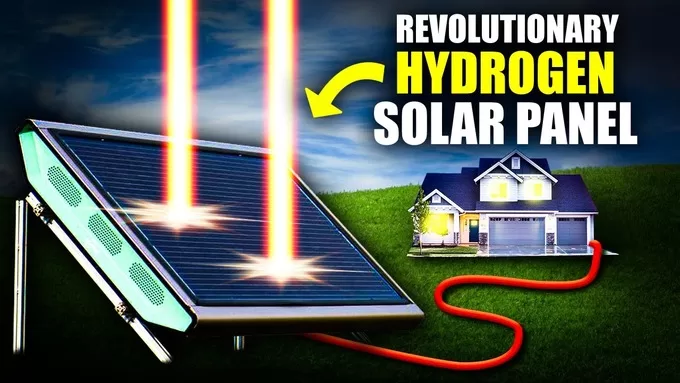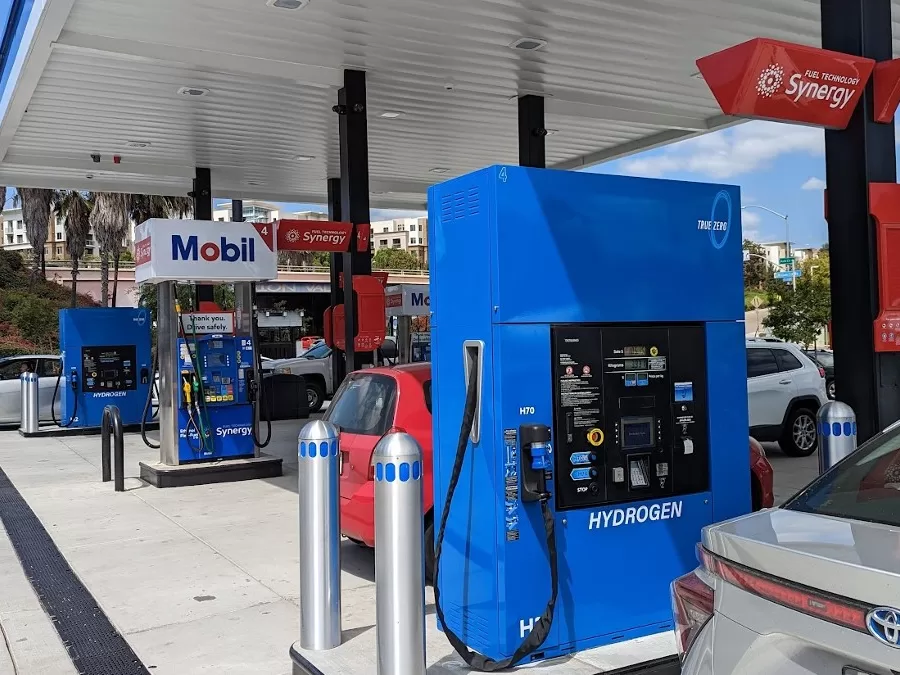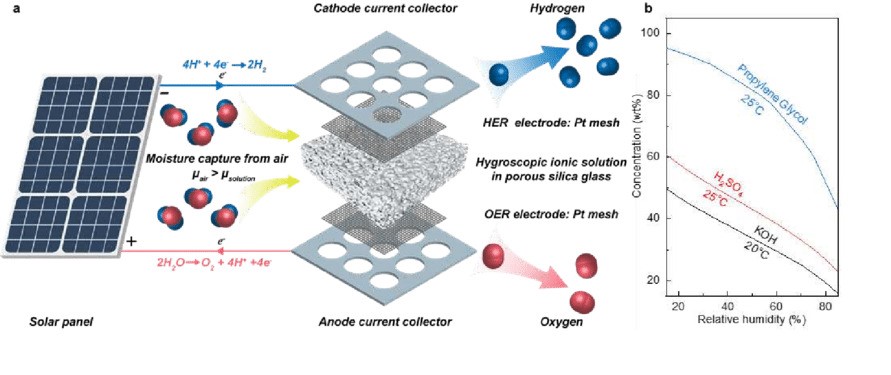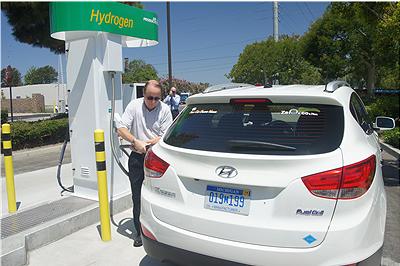A Revolutionary Technology Turning Thin Air into Clean Fuel
Producing Hydrogen Direct from the Air – How this technology works, why it is important, and how to implement it – Solar Powered Direct Air Electrolyzer: A Novel Way to Produce Green Hydrogen from Air
Prof. Aécio D’Silva, Ph.D
AquaUniversity

Producing Hydrogen Direct from the Air – Hydrogen is a clean and versatile energy carrier that can be used for various applications, such as transportation, electricity, and industry. However, most of the hydrogen produced today comes from fossil fuels, which emit greenhouse gases and contribute to climate change. To produce hydrogen in a sustainable and environmentally friendly way, we need to use renewable energy sources, such as solar power, and water as the raw material. However, water is a scarce and precious resource, especially in arid and semi-arid regions, where solar energy is abundant, but water is not. Is there a way to produce hydrogen from solar power without using water? The answer is yes, thanks to a novel technology called solar-powered direct air electrolyzer (DAE).
Solar-powered DAE is a technology that can produce hydrogen from the air, using solar power as the energy source. It does not require any input of liquid water, as it can extract water vapor from the air, even in very dry conditions. It can also operate in remote and off-grid locations, where access to water and electricity is limited or nonexistent. In this blog post, we will explain how solar-powered DAE works, why it is important, and how to implement it.
Producing Hydrogen Direct from the Air – How solar-powered DAE works
Solar-powered DAE consists of three main components: a solar panel, a direct air electrolyzer, and a hydrogen storage tank.
- Solar panel. The solar panel is a device that converts sunlight into electricity. It can be made of various materials, such as silicon, perovskite, or organic compounds. The solar panel can be connected to a battery or a capacitor, to store the excess electricity for later use, or to a grid, to sell the electricity to the market.
- Direct air electrolyzer. The direct air electrolyzer is the device that converts electricity and air into hydrogen and oxygen. It consists of two electrodes, an anode, and a cathode, separated by a porous material that acts as a water harvesting unit and an electrolyte reservoir. The porous material is soaked in a hygroscopic liquid, which is a substance that can absorb moisture from the air. When electricity is applied to the electrodes, water vapor from the air is split into hydrogen and oxygen, which are collected at the cathode and the anode, respectively.
- Hydrogen storage tank. The hydrogen storage tank is the device that stores the hydrogen produced by the direct air electrolyzer. It can be made of various materials, such as metal, composite, or glass. The hydrogen storage tank can be connected to a fuel cell, to convert the hydrogen back into electricity, or to a pipeline, to transport the hydrogen to the market.
The advantages and disadvantages of solar-powered DAE
Solar-powered DAE has several advantages and disadvantages compared to other methods of producing hydrogen, such as water electrolysis, steam reforming, or biomass gasification. Some of the advantages are:
- It does not require any input of liquid water, which is a scarce and valuable resource, especially in arid and semi-arid regions.
- It can operate in any location, as long as there is sunlight and air, which are universally available and inexhaustible.
- It can produce hydrogen sustainably and cleanly, without emitting any greenhouse gases or pollutants, and without impacting the environment.
Some of the disadvantages are:
- It requires a high amount of electricity, which can be expensive and variable, depending on the solar irradiance and the efficiency of the solar panel.
- It requires a high amount of hygroscopic liquid, which can be corrosive and toxic, and which needs to be replenished and recycled periodically.
- It has a low yield and purity of hydrogen, which can be affected by the humidity, temperature, and pressure of the air, and which needs to be compressed and purified before use.

Producing Hydrogen Direct from the Air – How to implement solar-powered DAE
Solar-powered DAE is still a relatively new and emerging technology, and it has not been widely implemented yet. However, some researchers and companies have developed and tested prototype devices and systems and have demonstrated their feasibility and potential. For example:
- A team of researchers from the University of Melbourne in Australia has developed and tested a small-scale solar-powered DAE device, using melamine sponge as the porous material and potassium hydroxide as the hygroscopic liquid. They have shown that the device can produce hydrogen from air with a relative humidity as low as 4%, and with a faradaic efficiency of about 95%. They have also shown that the device can be powered by a paperback-sized solar panel and can produce 3.7 cubic meters of hydrogen per day, per square meter of cathode. [1]
- A company called H2GO Power in the UK has developed and tested a large-scale solar-powered DAE system, using sintered glass foam as the porous material and a proprietary hygroscopic liquid. They have shown that the system can produce hydrogen from air with a relative humidity as low as 10%, and with a faradaic efficiency of about 90%. They have also shown that the system can be powered by a standard solar panel, and can produce 1.5 kilograms of hydrogen per day, per square meter of cathode. [2, 3]
To implement solar-powered DAE, some of the steps and factors that need to be considered are:
- Design and optimize the solar-powered DAE device or system, by selecting the appropriate materials, dimensions, and configurations, and by testing and evaluating their performance and durability under various conditions and scenarios.
- Identify and secure the suitable location and site, by assessing the availability and quality of sunlight, air, and land, and by obtaining the necessary permits and approvals from the authorities and the stakeholders. [4, 5]
- Install and operate the solar-powered DAE device or system, by following the instructions and guidelines from the manufacturers and the operators, and by ensuring the safety and reliability of the equipment and the personnel.
- Monitor and maintain the solar-powered DAE device or system, by collecting and analyzing the data and the feedback from the sensors and the users, and by performing regular and preventive checks and repairs of the components and the functions. [6, 7]
In conclusion, solar-powered DAE is a novel and promising technology that can produce hydrogen from the air, using solar power as the energy source. It has the potential to overcome the water supply issues and to produce green hydrogen sustainably and cleanly, with minimal impact on the environment. However, it also faces some challenges and limitations, such as the high electricity and hygroscopic liquid consumption, and the low hydrogen yield and purity. Therefore, it needs further research and development, and more demonstration and deployment, to improve its performance and feasibility, and to reduce its costs and risks.
How to Produce Green Hydrogen
References:
[1] Li, K. G., Zhang, Y., Wang, Z., & Li, F. (2022). Direct air electrolysis for hydrogen production. Energy & Environmental Science, 15, 3160-3169. https://newatlas.com/energy/direct-air-electrolyzer-hydrogen-humidity:
[2]: H2GO Power. (n.d.). Hydrogen from air. Retrieved from https://www.sciencealert.com/new-prototype-device-harvests-water-from-the-air-to-make-hydrogen-fuel
[3]: International Energy Agency. (2019). The future of hydrogen. Retrieved from https://lifeboat.com/blog/2022/09/worlds-first-direct-air-electrolyzer-makes-hydrogen-from-humidity
[4]: PV Magazine. (2022). PV-powered direct air electrolysis module to produce hydrogen from moisture in air. Retrieved from https://www.pv-magazine.com/2022/09/08/pv-powered-direct-air-electrolysis-module-to-produce-hydrogen-from-moisture-in-air/
[5]: Revolution.Aero. (2022). Hydrogen from humidity: World first direct air electrolyser. Retrieved from https://www.revolution.aero/news/2022/09/15/hydrogen-from-humidity-world-first-direct-air-electrolyser/
[6] https://newatlas.com/energy/direct-air-electrolyzer-hydrogen-humidity
[7] https://www.sciencealert.com/new-prototype-device-harvests-water-from-the-air-to-make-hydrogen-fuel




